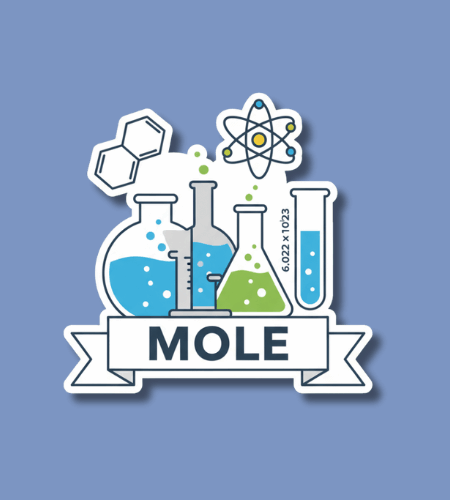National Mole Day, celebrated each year on October 23, is an engaging tribute to the chemical concept of the mole — a fundamental measurement in chemistry. The observance runs from 6:02 a.m. to 6:02 p.m., reflecting the number 6.02 × 10²³ which defines one mole of substance.
Table of Contents
History of National Mole Day
The idea of National Mole Day emerged in the 1980s as an educational tool to spark interest in chemistry among students. A high‑school chemistry teacher, inspired by an article about celebrating the mole, helped launch the concept. In 1991 the National Mole Day Foundation was established to promote the event and support related activities.
The date and times—October 23 from 6:02 a.m. to 6:02 p.m.—were chosen because they mirror the digits in Avogadro’s number (6.02 × 10²³), the constant that specifies how many atoms or molecules are present in one mole of a substance. The observance grew especially in schools and chemistry clubs in the United States and beyond, providing a playful yet meaningful way to learn about scientific measurement.
Why is National Mole Day important?
National Mole Day offers more than a quirky classroom occasion—it invites us to consider the scale of the unseen world and how scientists make sense of incredibly large numbers and tiny particles. The mole concept is central in chemistry because it allows us to count atoms and molecules in practical amounts, bridging the gap between the microscopic scale of molecules and the macroscopic world we interact with. In that way the day reminds us how measurement and scientific thinking ground our understanding of nature.
Also, this celebration underscores how learning can be playful and creative. By aligning a formal scientific idea with a “holiday” format—complete with jokes, themed activities and demonstrations—the event invites participation, curiosity and conversation. It makes a core scientific concept accessible to students, teachers and enthusiasts alike.
- It reminds us that science uses clever conventions (like the mole) to make sense of the very large and very small.
- It highlights the role of education and creativity in making abstract ideas meaningful.
- It gives a moment to appreciate the historical lineage of the concept—how scientists like Amedeo Avogadro contributed foundational ideas.
- It brings together learners and educators to celebrate science rather than view it as distant.
- It reinforces that knowledge often grows out of curiosity, experiment and community.
How to Celebrate National Mole Day
Celebrating National Mole Day can be simple, accessible and even fun whether you’re a student, teacher, parent or just curious. Start by choosing a small project around the concept of the mole—perhaps calculate how many molecules are in a teaspoon of water, or bake cookies and guess how many ‘moles’ of sugar you used. The point isn’t perfection but engagement and discovery.
You could also bring friends or classmates together and host a little “mole‑party”: wear shirts with “6.02 × 10²³,” make mole‑themed art or puns, or conduct a short demo illustrating how chemists count the uncountable. Sharing that curiosity and new understanding makes the day meaningful.
- Measure something and calculate how many moles are in it (for example a beverage or snack).
- Bake or decorate mole‑themed treats and make jokes or puns around the concept.
- Dress up or wear a shirt referencing 6.02 × 10²³ and explain it to someone.
- Host a mini‑quiz or game with chemistry friends around the idea of a mole and Avogadro’s number.
- Record or share a short video/photo of how you celebrated the day and why the number matters to you.
National Mole Day Dates Table
| Year | Date | Day |
|---|---|---|
| 2025 | October 23 | Thursday |
| 2026 | October 23 | Friday |
| 2027 | October 23 | Saturday |
| 2028 | October 23 | Monday |
| 2029 | October 23 | Tuesday |
Subscribe to our newsletter and never miss a holiday again!

